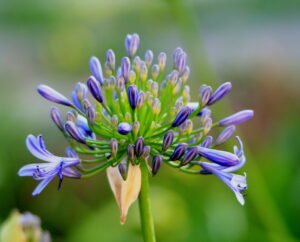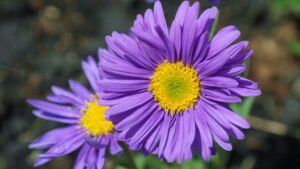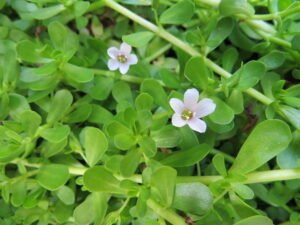Pansy Plant Care: Everything You Need to Know!

Pansies are delightful, colorful flowers that can brighten up any garden or window box. If you are planning to grow pansy flower plants but you are unsure about how to take care of pansy flower plants you are in right place. Hello Gardening Friend ! Welcome to our comprehensive guide on pansy plant care! Whether you’re a seasoned gardener or a beginner, this article will provide you with all the information you need to keep your pansies happy and thriving.

Some Commonly Asked Questions About Pansy
Why grow pansy flowering plants? because pansy flowers are bright, vibrant and colorful and they instantly make any garden a cheerful place and a sight to behold. They attract bees and butterfly to your garden which is good for pollination of other plants. So if you want many butterflies in your garden plant pansy flowering plants. They are good flowering plants to grow in pots and containers and are good ground cover plants also.
Fun Fact: Pansy flowers are edible.
What are some famous varieties of pansy plant? Orange Sun, Pure Light Blue, Raspberry Swirl, Pure Golden Yellow, Rhine gold, Pastel Mix are some of famous varieties if pansy.
Is pansy annual or perennial? Pansy are mostly grown as annual plant but they are in fact short lived short-lived perennials. If you are living in a place that have harsh winters and summers they can be grown as annual plants, but if they are given proper care they can survive for more than one growing season though flowering performance declines after first season.
Pansy flowering season? If you are living in colder climate pansy flowering season is spring to summer. In hot climate winter is the main flowering season for pansy flowers.
Pansy: Choosing the Right Location
Pansies thrive in cool weather, so it’s important to choose the right location for them. They prefer full sun to partial shade (here partial shade means areas that receive direct and indirect sunlight throughout the day and it does not mean completely dark areas of your garden), so look for a spot in your garden that receives at least 4-6 hours of sunlight each day, because to grow nicely pansy plant needs sunlight for 4-6 hours minimum. If you live in a warmer climate, providing some afternoon shade can help prevent the plants from wilting.
Pansy: Soil Preparation
Before planting your pansies, it’s essential to prepare the soil properly. Pansies grows best in well draining soil that have lots of organic matter. Pansy likes slightly acidic to neutral soil. You can improve the soil’s drainage by adding compost or well-rotted manure. Additionally, if your soil is heavy or clay like incorporating some perlite or sand into the soil can also help improve drainage.
Pansy: Planting Pansies
You can grow pansy flower plant through seeds. Normally pansy seeds take 2 weeks to germinate. Or you can buy plants or seedlings of pansy from nursery and can plant in pot or container of your choice. When it comes to planting pansies, timing is crucial. They are cool-season flowers and should be planted in early spring or late fall. Make sure to space the plants about 6-8 inches apart, as they need room to grow. Gently dig a hole and place the plant in, ensuring that the top of the root ball is level with the soil’s surface. Then fill the hole with soil, ensure soil is firm around root ball and their are no air pockets around root ball.
Pansy: Watering
Pansies have moderate water needs. Always keep the soil consistently moist but ensure there is no waterlogging or soil is not soggy. Water the plants deeply whenever the top inch of soil feels dry. Always water in roots and ensure to avoid overhead watering, as watering on leaves and stems can lead to disease and fungal issues. Instead, water at the base of the plants to keep the leaves dry. Wait for the soil to dry between two watering.
Pansy: Fertilizing
Pansy is heavy bloomer and heavy feeder; it means that to keep your pansies healthy and blooming, regular fertilization is necessary. Use a balanced, slow-release fertilizer (Compost, vermicompost or organic manure) or a liquid fertilizer (NPK) diluted according to the package instructions. Best fertilizer for pansy flowering is NPK 20-10-20 or NPK 2-1-2, Apply the organic slow release fertilizer every 4-6 weeks and NPK fertilizer every 1-2 weeks during the growing season. Be careful not to over-fertilize with nitrogen rich fertilizers, as it can lead to excessive foliage growth and fewer flowers.
Pansy: Deadheading and Pruning
Pansy flowering plant needs deadheading. Deadheading is simply the process of removing old flowers that are dead or spent flowers. This not only keeps your pansies looking tidy but also encourages more blooms. Because if you allow flowers to dry on plant it initiates seed making process in pansy plant. Once seed making is started in plants it diverts all energy to seed making and new flowers are not encouraged by plant. So deadheading is essential to maintain regular and continuous blooms in pansy plant.
Deadheading in pansy is easy; simply pinch off the faded or dead flowers at the base of the stem. Additionally, you can also prune your pansies to maintain their shape and prevent them from becoming leggy. Pruning can be done by cutting back the plants by about half their height.
Pansy: Pest and Disease Control
Pansies are generally resistant to pests and diseases, but they can still fall victim to a few common issues. Slugs and snails are often attracted to pansies, so it’s essential to keep an eye out for them. You can use organic slug and snail control methods or create barriers around your plants to protect them. Additionally, pansies can be susceptible to powdery mildew and root rot which is fungal disease. Proper watering and maintaining good air circulation can help prevent these problems.
If your pansy plant have already developed fungal disease then spray good quality plant’s fungicide and prune the affected areas to stop the further spreading of fungal disease.
Pansy: Winter Care
If you live in an area with harsh winters, it’s important to provide some winter protection for your pansies. Apply a layer of mulch around the plants to insulate the roots and protect them from freezing temperatures. You can also cover the plants with a frost cloth or move potted pansies indoors to a cool, well-lit area.
Conclusion
Pansies are beautiful, versatile flowers that can bring color and cheer to any garden. By following the tips and guidelines outlined in this post, you’ll be well-equipped to care for your pansies and enjoy their vibrant blooms throughout the year. Happy gardening!
Tags: #Pansy Plant Care, #How To Care Pansy Plant, #How to Grow Pansy Plant, #Pansy plants care for beginners, #Pansy Plant care tips, #AmazeGarden.Com, #Plants Care Tips, #Gardening, #Kitchen Gardening, #Terrace Gardening, #Backyard gardening, #Container Gardening, #Urban Gardening, #plants Care, #Pansy Flower Care, #Pansy Flower Care Tips
If You Want To Get Latest Gardening News, Tips And Tricks Directly In Mail, Please Subscribe !









